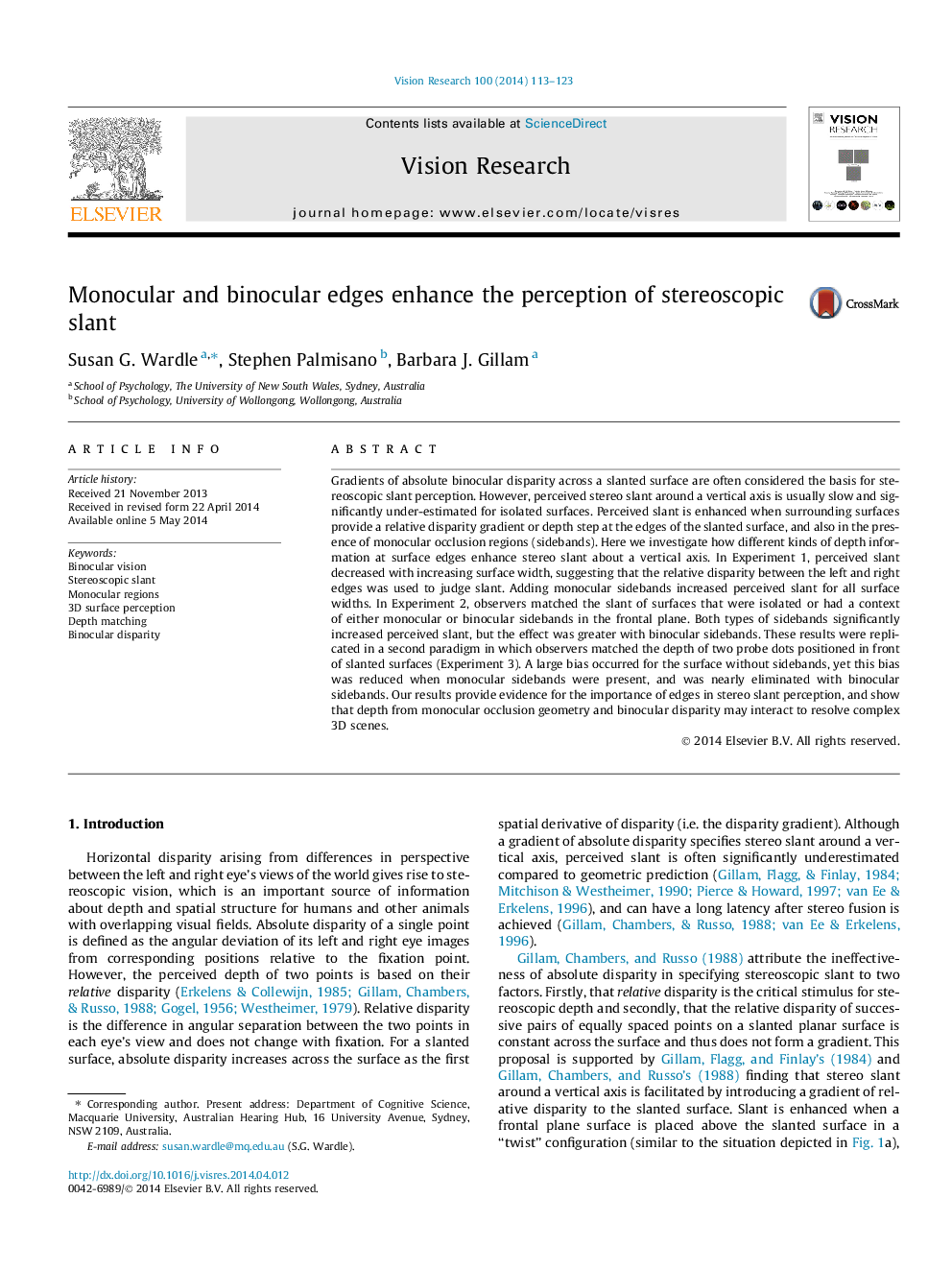| Article ID | Journal | Published Year | Pages | File Type |
|---|---|---|---|---|
| 6203337 | Vision Research | 2014 | 11 Pages |
â¢Greater slant was perceived for narrower than wider stereoscopic surfaces.â¢Monocular background (occlusion) information increased slant.â¢Binocular background information was more effective than monocular.â¢Edge information has a large effect even when a dense disparity gradient is present.
Gradients of absolute binocular disparity across a slanted surface are often considered the basis for stereoscopic slant perception. However, perceived stereo slant around a vertical axis is usually slow and significantly under-estimated for isolated surfaces. Perceived slant is enhanced when surrounding surfaces provide a relative disparity gradient or depth step at the edges of the slanted surface, and also in the presence of monocular occlusion regions (sidebands). Here we investigate how different kinds of depth information at surface edges enhance stereo slant about a vertical axis. In Experiment 1, perceived slant decreased with increasing surface width, suggesting that the relative disparity between the left and right edges was used to judge slant. Adding monocular sidebands increased perceived slant for all surface widths. In Experiment 2, observers matched the slant of surfaces that were isolated or had a context of either monocular or binocular sidebands in the frontal plane. Both types of sidebands significantly increased perceived slant, but the effect was greater with binocular sidebands. These results were replicated in a second paradigm in which observers matched the depth of two probe dots positioned in front of slanted surfaces (Experiment 3). A large bias occurred for the surface without sidebands, yet this bias was reduced when monocular sidebands were present, and was nearly eliminated with binocular sidebands. Our results provide evidence for the importance of edges in stereo slant perception, and show that depth from monocular occlusion geometry and binocular disparity may interact to resolve complex 3D scenes.
